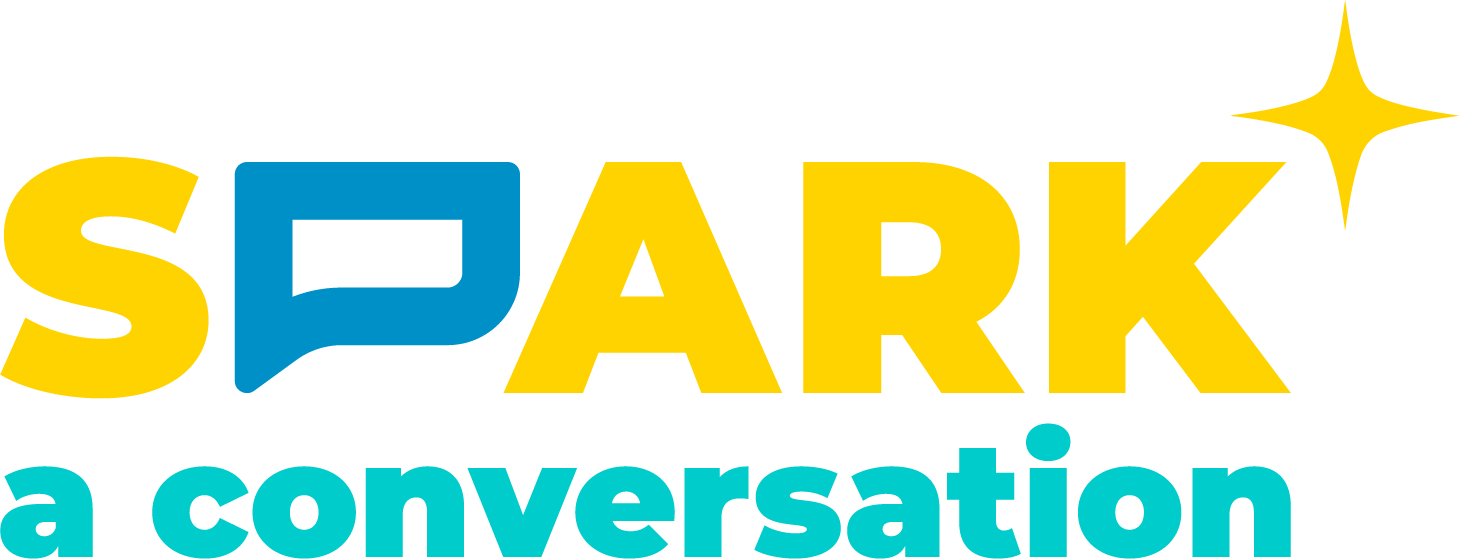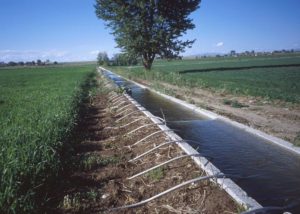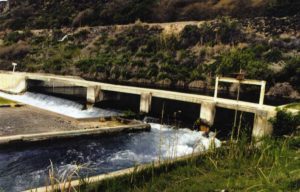
Water Resource Engineer Cynthia Bridge Clark helps the state of Idaho decide who gets water and how much they get.
When have you had to share something important? What was it? How did you figure out how to share it?
Idaho’s Snake River, which flows into the Columbia River system, “is our lifeblood,” says Water Resource Engineer Cynthia Clark. In Idaho, as in many parts of the American West, water can be hard to come by. Who decides who gets water and how much they can use? Civil Engineers like Clark, hydrologists, geologists, and the rest of the team at the Idaho Department of Water Resources do the work that helps make those kinds of decisions as fair and practical as possible.
In Idaho and other states, canals (also called ditches) and pipelines carry water from rivers and streams to farms, where it is used to irrigate crops. To see how much water is flowing in a canal, river, or stream at different times of year, water managers, also known as “ditch riders” or “water masters,” put on waders (boots that cover most of their bodies), walk into the water, and measure its depth and velocity (speed), using devices such as an ultrasonic or electromagnetic flow meter. They use measurement tools called Parshall flumes and trapezoidal weirs to determine how much water flows through the canal. Their measurements help the Department of Water Resources figure out what’s available for people to use.
Telemetry stations and data loggers at some canals and streams make these measurements automatically. This is helpful because it saves time and allows water managers to monitor water flow rates at any time. To make sure that the automated water measurement stations are accurate, ditch riders periodically make their own measurements and check them against the numbers collected by the data loggers. Then they compare and calibrate the automated stations to make sure they are reading the water flow correctly.

Clark enjoys designing and working with the structures involved in water management. “I am particularly fond of automated bladder dams, which are rubber dams that can be inflated and deflated in order to release a certain amount of water.”
As a child growing up in Boulder, Colorado, Cynthia spent a lot of time outdoors, learning to appreciate the mountains and waterways of the West. Her grandfather, Physicist and Chemist Herbert Bridge, participated in the Manhattan Project, experimented with cosmic rays and plasma, and helped inspire Clark and her sister (a biologist who works with invertebrates) to study math and science. “We also had some astounding math teachers: Mrs. Pearlman really encouraged women and men to pursue mathematics. She was a tough nut but very encouraging and enthusiastic about the subject.”
In high school, in addition to taking advanced math classes with Mrs. Pearlman, Clark read Cadillac Desert: The American West and Its Disappearing Water, by Marc Reisner, which describes the Colorado, “a fully-appropriated river,” supplying crucial amounts of water to the people of Clark’s home state and across the West, all the way to Mexico.
Water is used for all kinds of purposes, such as: the irrigation of crops on farms and lawns in cities; drinking water; hydropower; and all kinds of recreation. In many western states, anyone using water is required to have a “water right.” Different agencies help oversee those water rights in order to make sure that only the amount of water allowed under each right goes to the person entitled to it. If one person or group uses more than their share of water, there may not be enough water for other water right holders. Agencies such as the Idaho Department of Water Resources monitor both surface water (taken from rivers and canals) and ground water (water taken from the aquifer through wells). This can be very complicated, especially during years of drought, when there is not enough precipitation (rain and snow). It can be difficult to determine who should get their water first and how much water each group can take.
To add to the complexity, scientists have discovered that surface and ground water affect each other, because they are connected. In the past, when people living in Idaho drew or diverted water from the Snake River to irrigate their land, a large percent of it would seep into the ground as it moved through canals and onto the fields, becoming part of the aquifer. And some of the water from the aquifer actually flowed back to the river through springs and seeps. In Idaho there was enough water flowing from springs that a number of fish farmers built fish hatcheries near the springs, to take advantage of the clean water coming through the aquifer.

Over time, many people punched or drilled wells into the ground, to pump water from the aquifer near their lands rather than moving it all the way from the river, through the canals. As irrigation technology improved and more wells were drilled, most of the water was prevented from seeping down into the ground. That meant that aquifer levels began to decline and less water returned to the river through the springs. As a result, the people drawing water from the aquifer are now competing with those taking water from the surface (i.e. the Snake River and its tributaries). When people pump water from their wells, the flow of springs can decrease, sending less water to the Snake River. The people with the oldest water rights in Idaho have access to that Snake River water. (They basically have dibs on that water.) Protecting the water they need for their farms and other businesses means limiting the ground water other people draw from wells.
All of this competition over water makes the job that Clark and her colleagues at the Department of Water Resources do very important. “If you make the ground water users stop pumping [from a well], it may take years or decades for the water to get back to the river so the groups relying on surface water still won’t get the water they need when they need it. Therefore, it isn’t a good solution for anyone. From our standpoint, our best resource to solve problems is to have a good technical understanding of what’s going on in the system. How does the aquifer function? If we’re going to change things, how and where do we do it? Do we encourage water right transfers?”
Because there is not always enough water to go around, Clark and her colleagues consider different ways of conserving Idaho’s most important natural resource. Should they build dams to prevent the melted snow and rain that runs into other states in the early spring from leaving Idaho? When excess water is available, can they put it back into the ground to “recharge” the aquifer? Are there ways to reduce the amount of water used and needed through conservation when supply is low?
Clark has the opportunity to work on all of these strategies and create solutions that won’t cause other problems. The projects she participates in include: building new dams and reservoirs; identifying places and ways to put water back into the ground, improving aquifer and spring flows; and helping people use less water. Farmers can plant crops which require less irrigation: wheat and hay can be watered by rain alone, whereas alfalfa needs a good deal of extra water. The State sometimes pays farmers to practice “dryland farming” and stop diverting water for their fields for a certain amount of time. Balancing the needs of the aquifer and surface water systems with the needs of the different businesses and people of Idaho keeps Clark’s job as fascinating as it is important.


